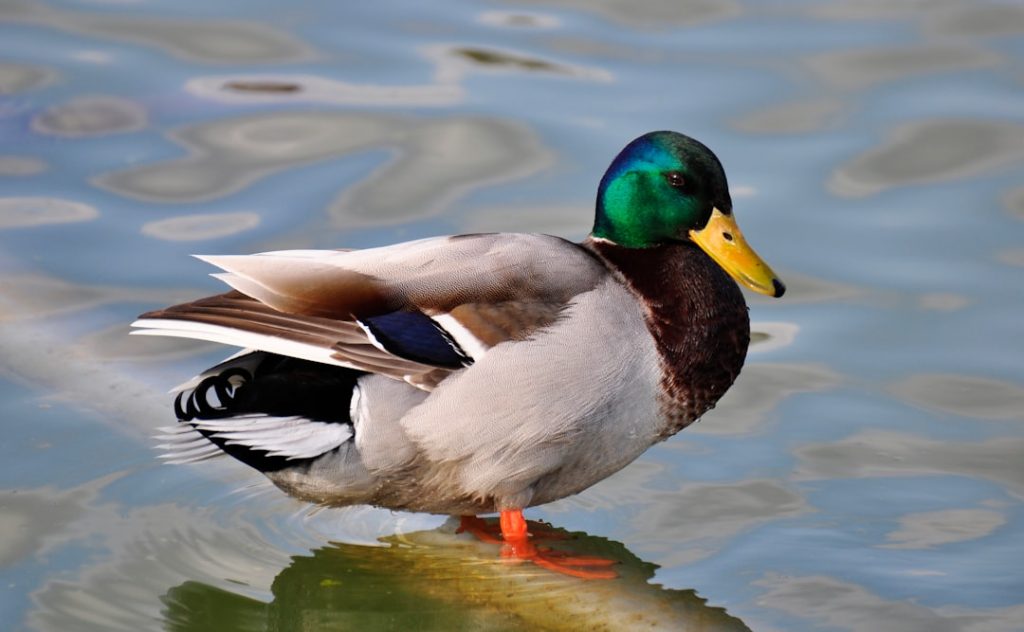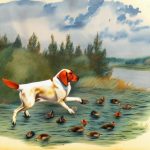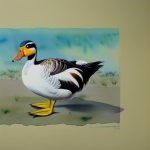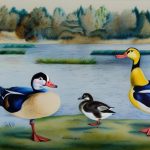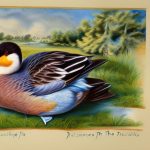North American duck breeds are a diverse group of waterfowl that are highly valued for their beauty, versatility, and usefulness. These breeds have been developed over centuries to thrive in the various climates and environments of North America, and they have become an integral part of the region’s agricultural and ecological landscape. From the iconic Mallard to the lesser-known breeds like the American Black Duck, North American duck breeds offer a wide range of characteristics and traits that make them valuable to farmers, conservationists, and enthusiasts alike.
Duck breeds in North America have a rich history, with many of them being descendants of wild ducks that have been domesticated over time. They have been selectively bred for specific traits such as egg production, meat quality, and adaptability to different environments. As a result, there is a wide variety of duck breeds in North America, each with its own unique set of characteristics and uses. Whether they are raised for their eggs, meat, feathers, or simply for their beauty, North American duck breeds play an important role in the region’s agriculture and conservation efforts.
Table of Contents
Key Takeaways
- North American duck breeds are diverse and popular for their unique characteristics and uses.
- Popular North American duck breeds include the Pekin, Mallard, and Muscovy.
- North American duck breeds vary in size, color, and feather patterns, with some breeds being better suited for egg production and others for meat.
- North American duck breeds are known for their friendly and sociable nature, making them great pets and additions to backyard flocks.
- Conservation efforts for North American duck breeds are important to preserve genetic diversity and ensure the survival of these valuable and unique breeds.
Popular North American Duck Breeds
1. Mallard
The Mallard is perhaps the most iconic duck breed in North America. Known for its distinctive iridescent green head and bright orange bill, the Mallard is a familiar sight in ponds, lakes, and wetlands across the continent. It is also a popular breed for domestication, prized for its beautiful plumage and adaptable nature. Mallards are known for their strong flying abilities and are often sought after by hunters for sport.
2. Pekin
The Pekin duck is another popular breed in North America, prized for its large size and excellent meat production. Originally from China, the Pekin duck has become a staple in American farms due to its rapid growth rate and efficient feed conversion. Pekin ducks are known for their white feathers and orange bills, and they are often raised for their meat, which is lean and flavorful.
3. Muscovy
The Muscovy duck is a unique breed that is native to Central and South America but has become popular in North America as well. Muscovy ducks are known for their distinctive red facial caruncles and quiet, docile nature. They are valued for their lean meat and are often raised for both meat production and pest control on farms due to their voracious appetite for insects.
4. Rouen
The Rouen duck is a breed that closely resembles the Mallard in appearance but is larger and heavier. With its striking plumage and calm temperament, the Rouen duck is a popular choice for ornamental purposes as well as for meat production. Rouen ducks are known for their excellent foraging abilities and are often raised in free-range environments.
Physical Characteristics of North American Duck Breeds
North American duck breeds exhibit a wide range of physical characteristics that make them unique and valuable. From their colorful plumage to their distinctive bills and feet, each breed has its own set of traits that contribute to its beauty and usefulness. Mallards, for example, are known for their iridescent green heads, while Pekin ducks have pure white feathers and bright orange bills. Muscovy ducks stand out with their red facial caruncles, while Rouen ducks closely resemble wild Mallards but are larger and heavier.
In addition to their plumage, North American duck breeds also vary in size and shape. Pekin ducks are known for their large size and broad bodies, making them ideal for meat production. Muscovy ducks, on the other hand, have a more slender build and distinctive long necks. Mallards and Rouen ducks fall somewhere in between, with medium-sized bodies and a sleek, streamlined shape that allows them to move gracefully through water and air.
Another important physical characteristic of North American duck breeds is their adaptability to different environments. Whether they are raised on farms or allowed to roam freely in natural wetlands, these breeds have evolved to thrive in a variety of habitats, from cold northern climates to warm southern regions. This adaptability makes them valuable not only for agricultural purposes but also for conservation efforts aimed at preserving wetland ecosystems.
Behavior and Temperament of North American Duck Breeds
North American duck breeds exhibit a wide range of behaviors and temperaments that make them fascinating and valuable animals to work with. Mallards, for example, are known for their strong flying abilities and migratory nature. They are highly social birds that form tight-knit flocks during the breeding season and are often seen in large groups on ponds and lakes. Pekin ducks, on the other hand, are more docile and sociable, making them easy to handle and raise in domestic settings.
Muscovy ducks are known for their quiet nature and gentle temperament, making them popular choices for backyard flocks and small farms. They are also excellent foragers and can help control insect populations on agricultural land. Rouen ducks share many of the same traits as Mallards but are generally more calm and easygoing, making them ideal for both meat production and ornamental purposes.
One common behavior among all North American duck breeds is their love of water. Ducks are natural swimmers and are happiest when they have access to ponds, streams, or other bodies of water where they can bathe, forage for food, and socialize with other ducks. This affinity for water makes them valuable not only for agricultural purposes but also for conservation efforts aimed at preserving wetland habitats.
Uses of North American Duck Breeds
North American duck breeds have a wide range of uses that make them valuable to farmers, conservationists, and enthusiasts alike. One of the most common uses of these breeds is for meat production. Pekin ducks, in particular, are prized for their lean, flavorful meat and are raised on farms across the continent for this purpose. Muscovy ducks are also valued for their meat, which is known for its rich flavor and tender texture.
In addition to meat production, North American duck breeds are also raised for their eggs. Ducks are prolific layers and can produce a steady supply of large, nutritious eggs that are prized by chefs and bakers alike. Their eggs are often used in baking due to their rich flavor and high fat content, which makes them ideal for creating light, fluffy pastries and cakes.
Another important use of North American duck breeds is for ornamental purposes. Many people raise ducks for their beauty and unique plumage, using them to add color and interest to ponds, gardens, and other outdoor spaces. Ducks like the Mallard and Rouen are particularly popular choices for ornamental purposes due to their striking appearance and graceful demeanor.
Conservation Efforts for North American Duck Breeds
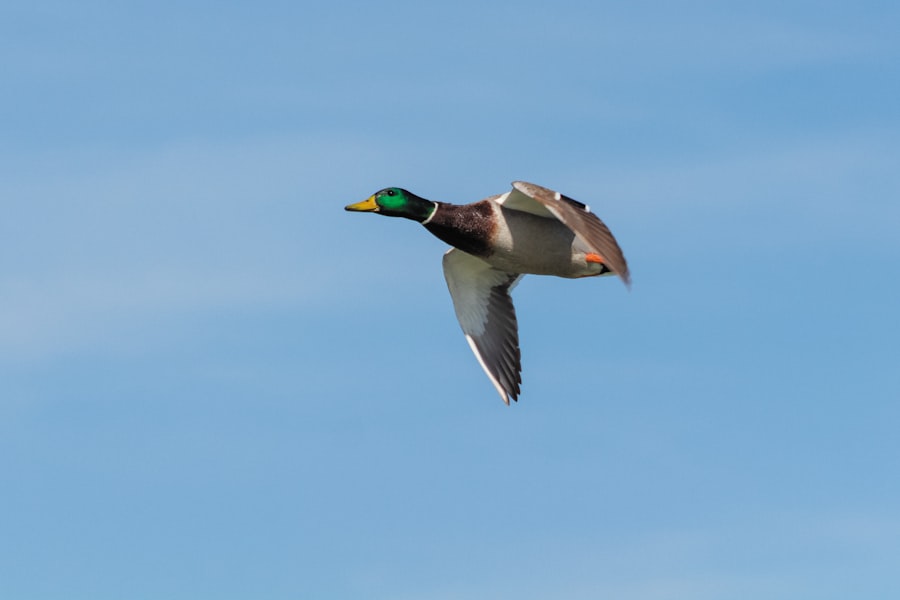
Conservation efforts for North American duck breeds play a crucial role in preserving these valuable animals and the habitats they depend on. Wetlands across the continent provide essential breeding grounds and stopover sites for migratory ducks, making them vital to the survival of many species. Conservation organizations work tirelessly to protect these habitats from destruction and degradation caused by human activities such as urban development, agriculture, and pollution.
In addition to habitat conservation, efforts are also underway to protect specific duck species that are at risk of decline or extinction. The American Black Duck, for example, has experienced population declines due to habitat loss and hybridization with Mallards. Conservationists are working to protect this iconic species by restoring wetland habitats, controlling invasive species, and raising awareness about the importance of preserving its genetic integrity.
Conservation efforts also focus on educating the public about the value of North American duck breeds and the role they play in maintaining healthy ecosystems. By raising awareness about the importance of wetlands as critical habitats for ducks and other wildlife, conservation organizations hope to inspire people to take action to protect these vital ecosystems.
The Importance of North American Duck Breeds
North American duck breeds play a vital role in the region’s agricultural landscape, conservation efforts, and cultural heritage. From their beauty and versatility to their ecological importance as key species in wetland ecosystems, these breeds offer a wide range of benefits that make them valuable to society as a whole. By understanding the physical characteristics, behavior, uses, and conservation needs of North American duck breeds, we can work together to ensure that these iconic animals continue to thrive for generations to come.
As we continue to appreciate the beauty and value of North American duck breeds, it is important to support conservation efforts aimed at protecting their habitats and genetic diversity. By working together to preserve wetlands, control invasive species, and raise awareness about the importance of these iconic birds, we can ensure that future generations will have the opportunity to experience the wonder of North American duck breeds in all their glory. Whether they are raised on farms or observed in their natural habitats, these remarkable animals deserve our respect and protection as an integral part of North America’s rich natural heritage.
If you’re interested in learning more about North American duck breeds, you might also want to check out this informative article on how to care for goslings. Understanding the care and breeding of waterfowl can provide valuable insights into the world of poultry farming and animal husbandry.
FAQs
What are some common North American duck breeds?
Some common North American duck breeds include the Mallard, Pekin, Rouen, and Muscovy.
What are the characteristics of North American duck breeds?
North American duck breeds vary in size, color, and behavior. They can range from small to large, have different color patterns, and exhibit various temperaments.
What are the uses of North American duck breeds?
North American duck breeds are commonly raised for their meat, eggs, and feathers. They are also popular for ornamental and exhibition purposes.
What are the differences between North American duck breeds?
Differences between North American duck breeds can include size, coloration, and behavior. For example, the Pekin duck is known for its large size and white feathers, while the Mallard is smaller and has a distinct iridescent green head.
How do you care for North American duck breeds?
Caring for North American duck breeds involves providing them with proper housing, nutrition, and access to water. They also require regular health checks and protection from predators.
Meet Walter, the feathered-friend fanatic of Florida! Nestled in the sunshine state, Walter struts through life with his feathered companions, clucking his way to happiness. With a coop that’s fancier than a five-star hotel, he’s the Don Juan of the chicken world. When he’s not teaching his hens to do the cha-cha, you’ll find him in a heated debate with his prized rooster, Sir Clucks-a-Lot. Walter’s poultry passion is no yolk; he’s the sunny-side-up guy you never knew you needed in your flock of friends!

